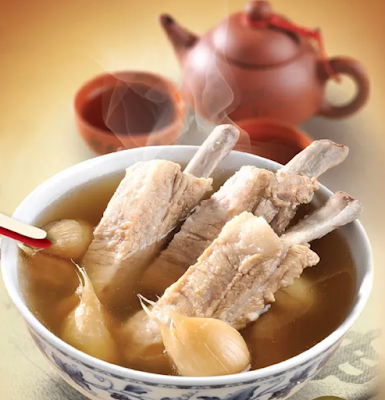Perceiving History with a Bowl of Bak Kut Teh
One of the themes of Palace of Ghosts is historical perspective and memory. I argue that this is a good thing because a shared sense of place and history is a key ingredient to the collective consciousness and collective self-confidence, both of which are vital qualities that help us face uncertainties that the future might hold. The overall result may be peace of mind and happiness. I reason that the more history communities can connect to in a positive way, the greater the sense of well-being. I also quote Winston Churchill when he famously once said, “The longer you can look back, the farther you can look forward”.
While this might sound obvious, the challenge can be that we are often unable to see clearly into history because we have a habit of compartmentalising it. We erect figurative screens, either consciously or unconsciously, that can block out episodes from the past. Worse still, sometimes such episodes are erased from history, creating a strange gap in the record. One of the causes of this is the frame of reference we use to perceive the past. In Singapore, there is a heavy emphasis on nation building and I believe this is a very relevant thing to do in order to bind the communities and the nation together. Similar policies are running in its two neighbouring countries. In Indonesia, the national motto is “Unity in Diversity”, in their language it is “Bhinneka Tunggal Ika” with each of the three words taken from three different languages out of the many that are spoken in this vast country. Malaysia too coordinates a great many policies across various aspects of government to promote ethnic and cultural diversity within a framework of national unity.
A perhaps unintentional byproduct of this can be, however, a parochialism that is based on a limited historical perspective. This, in turn, may derive from assumptions, particularly among the youth, about the age, nature, and provenance of the nation-state they are now part of. Singapore became a nation-state in 1965, Malaysia in 1963 and Indonesia proclaimed independence in 1945 and became the 60th member of the United Nations five years later.
A news article appeared during the week of Singapore National Day (August 9) which although of a somewhat trivial nature, serves as a good example of how parochial, and in this case nonsensical, some opinions can be and that probably result from the limited frame of reference of a relatively recently created nation-state. In the article “Rapper Namewee Says Malaysian Food is Better Than Singapore’s” rapper Namewee asks the question, in the context of Malaysia or Singapore, “Which country does Bak Kut Teh belong to?”
For those unaware of what Bak Kut Teh is, let me first say it is really delicious. It is succulent, fall-off-the-bone pork ribs cooked and served in a rich garlicky and peppery broth. The broth is so good that many restaurants will keep filling up your bowl with broth refills until you tell them to stop. The dish is such a culinary icon that restaurants are dedicated to specialising in this dish alone and they can be found all over town.
I was at a dinner once in Malaysia where one of the diners brought up a similar question of which country invented the equally famous dish, Black Pepper Crab. Fortunately, everyone else agreed to close down the question and eat. But for me, it is not who invented it, but why is the question even being asked? These dishes pre-date the nation-states on whose behalf the rapper Namewee makes grandiose claims.
As for the history of Bak Kut Teh, put aside for a moment that the name is from the Hokkien Chinese language and means “meat bone tea”. There are records of Bak Kut Teh served as street food going back to the early 20th century, some even to the mid-19th century, in the towns and cities of Malaya and The Straits Settlements. So, to ask who it belongs to displays a failure to consider the origin of the dish from the perspective of the geopolitical context of the times it first appeared. Secondly, the question seems to assume that culinary heritage, part of general cultural heritage, can be divided up and awarded to one side or another as if in some kind of divorce settlement. Heritage is commonly held; it can’t belong to someone or not to someone else, it either is your heritage or it is not; or it can become someone’s heritage over time. It does not correspond, exclusively, to the national borders that were invented well after Bak Kut Teh was being enjoyed by one and all.
Some episodes from history are too abhorrent or sickening to contemplate without experiencing shock or disbelief. Many others, with less tragic implications, simply puzzle us when considered through a modern lens. Palace of Ghosts seeks to understand the past events of an untold story, but within the context of the times in which those events took place. So, if you are lucky enough to sit down and enjoy a bowl of Bak Kut Teh, I would suggest to think not which modern country invented it, but rather what was on the minds of those people whose taste buds were first delighted by its memorable flavours and textures.




Comments
Post a Comment